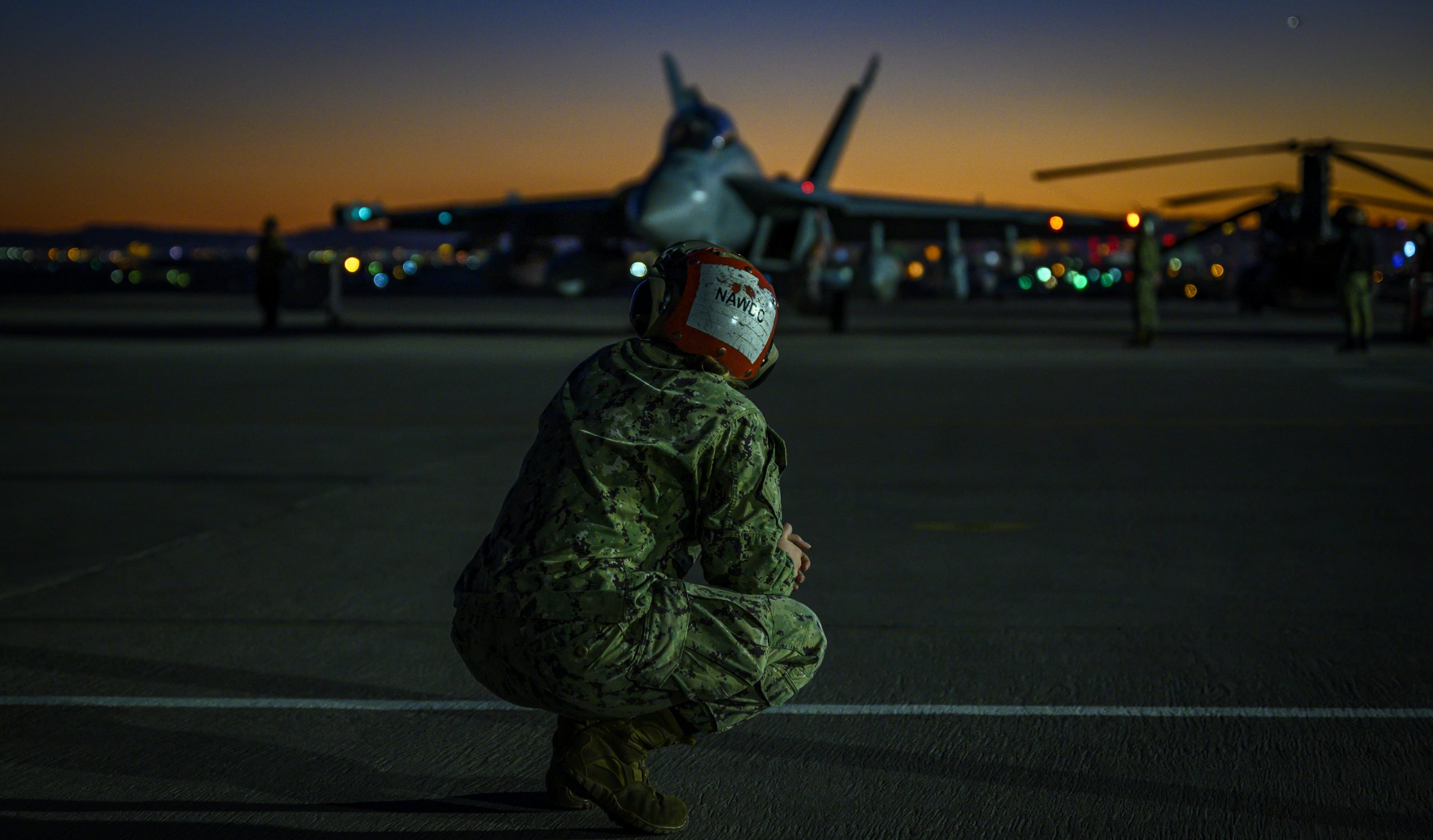Captain Brett Stevenson, the CO of HAVOC
During my visit to NAWDC in July 2020, I had the chance to continue my discussion on the evolution of electronic warfare with Captain Brett Stevenson, the CO of HAVOC.
During the earlier teleconference, we discussed a number of issues, most notably that being able to operate within and to dominate the electromagnetic spectrum is not a nice to have capability but is becoming a core requirement for effective engagement in conflict scenarios across the spectrum of warfare.
During the July visit, we continued our discussion and discussed a wide range of issues, but here I would like to focus on four, the return of EW, the changing nature of EW, the shaping of Growler Block II and the challenge of training for EW in the high end fight.
The first is basic one: electronic warfare for the fleet was largely in support of the land wars, not a core competence practiced as part of the maritime fight. As Captain Stevenson put it: “In the post-cold war environment we have allowed ourselves to not focus so much on EW. The average strike group commander did not have to worry about this threat. But we have rediscovered that hiding the strike group as you transit is a key part of the maritime battle. We are having to relearn skill sets.”
The second is that it is really about not just relearning but learning as well. The shift is from platform specific EW delivery to working networks of sensors, to shape the kind of combat effect one would want. According to Captain Stevenson: “We envision networks of sensors that will be contributing to the common operating picture. That means quicker, more accurate geo locations with sensors contributing to the picture.”
Recently, I listened to a presentation by a senior USMC General who suggested perhaps another way to think about the synthesis suggested by the common operating procedure. According to this General: “in a contested operational environment, where we know that our adversaries are getting good and perhaps better than us, we know that we have to learn to provide moments of clarity on demand as opposed to that persistent COP.”
The third is the coming of Growler BLOCK 2. What Captain Stevenson highlighted was not so much an aircraft designed to be an exquisite platform to do EW as a platform evolving to become a quarterback within the EW combat environment.
“What is driving Block II is a reassessment of capabilities to enhance our ability to prevail in the battlespace and overcome gaps that we currently have.”
“Growler Block 2 will be a complete redesign of the crew-vehicle interface. We are looking now at questions like: what processes should be automated? We are looking for ways to allow the crew to focus on the higher-level decision making. How is data presented so that it is easier to make better decisions? We are focused on ways to ensure that the right data is presented to the crew at the right time.”
“The new sensors are really the fundamental change that brings new capabilities. CVI makes the operator more efficient at employing those capabilities.”
“We need to go beyond the aircraft and leverage connectivity to understand what other sensor nodes can provide. There will be more focus on being EW battle manager rather than being a specialized EW aircraft doing the job by ourselves.”
In effect, Growler Block II is a reimaging of the aircraft and how it fits into the extended battlespace. Reimaging what an EW mothership looks like. MISR officers will contribute as well by tapping into national technical means as well to input to the EW management process. This is where multi-domain becomes a credible combat capability in the EW warfare area.
But the fourth area is a very challenging one. How do you train to deliver EW capability in a rapidly changing technological and combat environment?
Simply mastering the Growler as a combat platform is clearly not enough. And this is true not just because of the shift to a kill web enabling and delivery system for electronic warfare; it also about the nature of the signals one is training against. Historically, one would work with a library of threats and train to operate against those threats guided by the intelligence library.
As Captain Stevenson put it: “We need to be able to predict how systems will respond to our capabilities and countermeasures; and we need to shape cognitive EW systems that enable us to look at how a signal behaves in response to certain stimuli and then be able to adapt and have an effective response.”
How do you train to this?
And even more significant, as one trains, one is also guiding the question of the further development of the systems in the EW offensive and defensive combat force as well.
The range issue is an important one as well.
“There are capabilities we would like to train to – being mindful of spectrum constraints, operational security, etc. –that are difficult on a range. How do we balance a high-fidelity live flight experience on a training range with the benefits of training in a connected simulator environment?”
In short, in this critical combat area, innovations in training will be a key part of shaping an effective force going forward.
But what innovations can be shaped to ensure this happens?
Featured Photo: A U.S. Navy Airman, assigned to Naval Aviation Warfighting Development Center (NAWDC) at Naval Air Station Fallon, Nevada, observes an EA-18G Growler aircraft launch during Weapons School Integration at Nellis Air Force Base, Nevada, Dec. 1, 2020. The Growler provides tactical jamming and electronic protection to U.S. military forces and allies around the world. (U.S. Air Force photo by Airman 1st Class Dwane R. Young)

